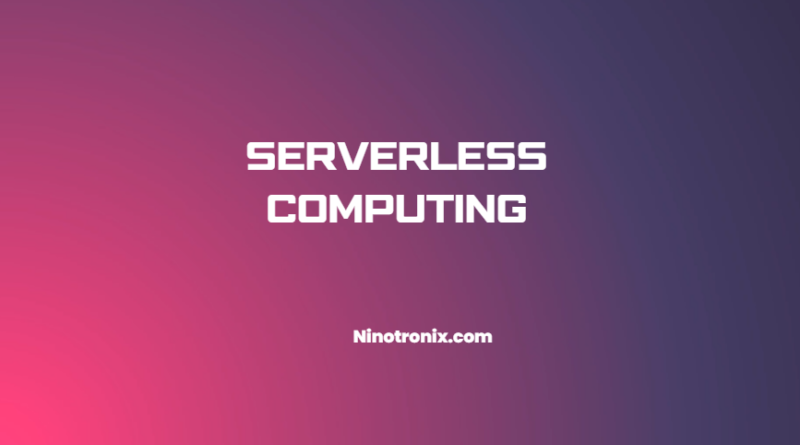What is Serverless computing
Serverless computing is a cloud computing model where the cloud provider manages the infrastructure required to run an application, allowing developers to focus solely on writing code. In this model, the provider manages the servers, operating systems, and other infrastructure components required to run the application, which is typically implemented as a function.
The concept of serverless computing is often referred to as Function-as-a-Service (FaaS), because the cloud provider offers a platform for executing functions on demand, without the need to manage the underlying infrastructure. When an application is deployed in a serverless environment, it is executed in response to an event, such as a user request or a message from a queue, and then terminates once the function has completed its task.
There are several benefits to using serverless computing, including:
- Reduced operational overhead: Serverless computing eliminates the need for developers to manage the underlying infrastructure required to run their applications, which reduces operational overhead and allows developers to focus on writing code.
- Scalability: Serverless computing platforms can automatically scale the number of function instances to handle increases in demand, ensuring that the application can handle spikes in traffic without downtime or performance degradation.
- Cost-effectiveness: Because serverless computing platforms charge based on the number of function invocations and the time it takes to execute each invocation, it can be a cost-effective option for applications with sporadic or unpredictable usage patterns.
- Reduced time-to-market: Serverless computing platforms allow developers to deploy and update their applications quickly, reducing time-to-market and allowing teams to iterate rapidly on their applications.
- Improved resiliency: Because serverless computing platforms are designed to automatically handle failures, such as server crashes or network outages, applications deployed in a serverless environment are generally more resilient than those deployed in a traditional computing environment.
However, there are also some potential drawbacks to using serverless computing:
- Vendor lock-in: Because serverless computing platforms are often provided by a single cloud provider, there is a risk of vendor lock-in, where it becomes difficult to migrate to a different platform or provider.
- Limited control: Because the cloud provider manages the underlying infrastructure, developers have limited control over the configuration of the environment, which can limit the ability to optimize the application for specific use cases.
- Cold start latency: When a function is invoked for the first time or after a period of inactivity, there may be a delay while the environment is initialized, which can impact the user experience.
- Function size limitations: Serverless computing platforms typically have limitations on the size of individual functions, which can make it difficult to implement certain types of applications.
Overall, serverless computing can be a powerful tool for developers, allowing them to focus on writing code and reducing operational overhead. However, it is important to carefully consider the benefits and drawbacks of this approach and ensure that it is the right choice for a particular application.




